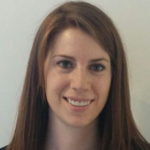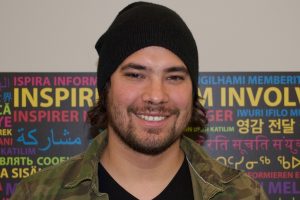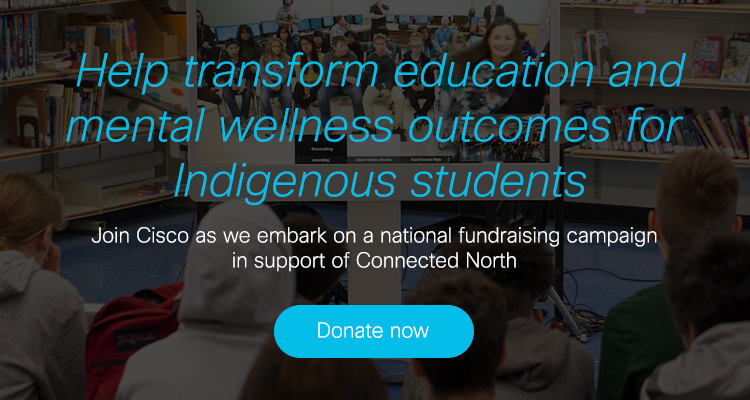
Stories of Connected North – Waukomaun Pawis: Building Relationships
6 min read
This post is part of a series highlighting the Stories of Connected North, a transformative program bringing education and mental wellness reources to remote communities.
Waukomaun Pawis is a member of the Ojibway of Wasauksing First Nation and is the Indigenous Program Coordinator for the Connected North (CN) program at TakingITGlobal. He works with teachers and principals from schools in remote and northern communities to develop CN sessions that fit with their classroom needs. The programming is not exclusively curriculum-based and includes virtual fieldtrips, such as to a museum or art gallery, to connect students and teachers with experiences that are unavailable in these remote communities without great expense.
Waukomaun spoke with me about his experiences with Connected North. Our interview has been edited for length below.
Susannah Scott: In addition to your role as Indigenous Program Coordinator, are there other ways in which you participate in Connected North?
 Waukomaun Pawis: I don’t only wear the hat of a facilitator but I’m also a content provider, generating my own content to cater to the needs of the communities I work with. I play guitar and have done playing sessions with students and teachers, as well as professional development sessions with teachers to discuss teaching methods and tips on structuring classes. I think it is important for everyone, of any culture, to create art, songs, lyrics, poetry even if they never share it. If you get into the habit of creating you can almost trick you mind into becoming an artist as you learn skills and new techniques.
Waukomaun Pawis: I don’t only wear the hat of a facilitator but I’m also a content provider, generating my own content to cater to the needs of the communities I work with. I play guitar and have done playing sessions with students and teachers, as well as professional development sessions with teachers to discuss teaching methods and tips on structuring classes. I think it is important for everyone, of any culture, to create art, songs, lyrics, poetry even if they never share it. If you get into the habit of creating you can almost trick you mind into becoming an artist as you learn skills and new techniques.
I also work to identify gaps in some of the services and education areas at the schools. We might not have the content or the contacts for that content, so I have to do the legwork to find guest experts. I have a great network of people, and so do my colleagues, but there are certain areas where we’re not necessarily connected. So I look for an art gallery or aquarium or Indigenous cultural centre and bring them onboard to enhance the learning of the CN students and give them different opportunities, whether they are curriculum-based or traditional knowledge.
We’re such a diverse nation of people across Canada. I’m Ojibway, but can only speak to what I know from my own community and this doesn’t necessarily reflect all of the Ojibway people and their knowledge. So I can share my knowledge, but I always mention that this is how it was taught to me from my elders, but another community might be slightly different and have a different view. There are over 600 First Nations communities in Canada, and then there’s Inuit and Metis people as well that we work with. So we try to find these content providers that can speak directly and from their own experiences to those communities. I can’t speak about Metis history or their experience or their traditions because I’ve never lived it. It’s the same with Inuit culture. I’m not from that background so I couldn’t start sharing stories or creating artwork based on their traditions. So we need to create partnerships and bonds that really enhance the learning and connect the students to their heritage.
“If I were to describe Connected North in one word, it’s empowering.”
SS: What was your first CN experience like?
WP: [Laughs.] My first CN session was also my job interview. When my job interview was over and I was ready to go home, the interviewers asked if I’d like to sit in on a session that was happening right then with an MP who was going to discuss leadership and different government roles.
The MP was running a few minutes late trying to find parking, so I was asked to speak with the students. I riffed on what leadership meant for me coming from my community. I’m naturally quite shy – put me in a room with a bunch of people and it’s hard for me to network. I’ve learned how, but it is still difficult. I have to challenge myself and so I talked about that, about having to learn these skills and challenge myself.
I shared how our leadership comes from different sources – our parents, our Chief and Council. Different levels of government – municipal, provincial, federal. And how leadership comes in different forms – you can be a leader by owning a business or being in charge of a department. That was my first session.
SS: Why do you think video-based learning is powerful and works for this program?
WP: Video-based learning is crucial to this program because it is the essence of how we connect with these remote, northern communities. We can’t just bring in a guest expert into the classroom. So the technology is an amazing tool that allows us to connect with those students to bring them guest experts virtually through video conferencing, which is like TV and a format they are familiar with. It is more exciting than seeing the same teacher every day. The students’ interest gets piqued. These communities are getting more reliable internet connections and have social media, so they know what’s going on in the outside world through TV, the internet, social media, but they don’t necessarily get to interact or connect with this. CN facilitates these connections, these interactions and we make them meaningful and encourage learning to inspire those young people.
“Our students need to see that there are Indigenous people who are doing very well for themselves in their chosen field of study or their career. In some of our communities, we don’t see that on a regular basis.”
SS: Why is it important to connect Indigenous students to Indigenous role models?
WP: Our students need to see that there are Indigenous people who are doing very well for themselves in their chosen field of study or their career. In some of our communities, we don’t see that on a regular basis. There’s a lot of negativity and negative history in these communities and our young people really need to see those role models and that they can achieve whatever they want to do in life.
A lot of the Indigenous communities are affected by intergenerational trauma, colonization, residential schools, 60s scoops, and these issues carry on into today. Years of intergenerational trauma and negativity towards First Nations people, Indigenous people, where we are told through violence that you are not a person unless you convert religions, change languages, change cultures. After all these years of being told that you’re worthless, people start to believe it, to internalize the racism, and behave negatively towards themselves and others.
But I think we are at a turning point. Indigenous people are becoming doctors and lawyers and those are awesome, positive role models for the kids to see. We want to connect students with artists, musicians, teachers, athletes so they can see how these people have succeeded and accomplished their goals and dreams. Seeing the students light up by being able to even communicate with somebody from outside of their own community through the technology is really cool.
SS: It sounds like relationship building is at the heart of the program – how do you build these relationships between you, the schools, and the content providers?
WP: Part of our mandate is to travel to these communities and build relationships in person. So I will go to a community and spend a week there, learning from the teachers. What are they teaching now? What is upcoming? Then I start thinking about how a CN session could supplement or enhance the learning, giving the students a new experience. I also meet and work with the students. I was at one school and the class was working on math – and I’m not a teacher or expert by any means – and I was put into a group with the some of the students. It was a grade 1 class and they were working on patterns. It was so fun to watch the light bulb click when they finally got the pattern and were able to complete their worksheet. To go from “I don’t know what I’m doing” to “oh my God I get it.”
As a facilitator working with those students, I’m one of those reoccurring people that they can connect with and communicate with. It’s really fun to get to know these students.
“I think we are at a turning point. Indigenous people are becoming doctors and lawyers and those are awesome, positive role models for the kids to see.”
SS: You were talking about how creativity and how your guitar sessions build confidence. How you use these sessions – it’s not just about the academic lesson. Is there one piece of advice you want to leave students with after your sessions? Or one piece of advice you’d like to give them?
WP: I really like to empower our youth through the sessions. So often I’m trying to sneak little advice, little ‘lived and learned ‘experiences that I’ve lived through and try to share that with the students. Even if it seems as though your path is already set, everyone has choices to make. I lived with alcoholism all around me growing up, but I chose to live a sober lifestyle because I didn’t want to go down that road. I felt I could give back to my community and be a role model, if I didn’t choose that path.
SS: If you could describe CN in a single word, what word would it be?
WP: I don’t know how to say it – to instill pride, connections, because those connections I think are really powerful.
If I were to describe Connected North in one word, it’s empowering.
Read Chef David Wolfman’s story – “Giving back and sharing”
1 Comments

Shekon Wauk
Congratulations on your education programs at Connected North. I seen your story in today’s Toronto Star. I believe you’re in your domain and I do wish you all the best. Hard work as you know always pays off!
Take care
Paul Latchford
Manager Indigenous Services (Retired)
Tyendinaga Mohawk Territory
49 South Church Lane KOK 1X0